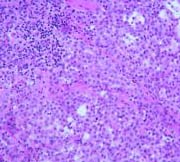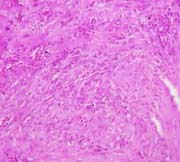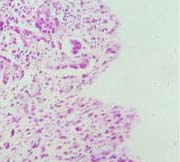Doctor-Patient Communication
An open line of communication between a patient and his or her physician is vital when dealing with a serious disease such as mesothelioma. There will be many questions regarding treatment, whether palliative or aggressive, choices to deal with, and life issues to confront. Being informed and proactive in your care will give you a sense of empowerment.
Although most physicians have limited time to spend with each patient at appointments, it is important to address issues as they occur and resolve them to the satisfaction of all parties involved. Initially, this may mean going to your appointment with a list of symptoms or concerns, or questions regarding specific tests that are recommended. Once mesothelioma has been diagnosed, you may have questions regarding treatment options.
Most questions from patients stem from an initial diagnosis of mesothelioma and subsequent treatment options. Following are some frequently asked questions regarding these two important issues.
What Is My Diagnosis?
There are three types of mesothelioma. Pleural mesothelioma is a cancer of the lining of the lung (pleura), peritoneal mesothelioma is a cancer of the lining of the abdominal cavity (peritoneum), and pericardial mesothelioma is a cancer of the lining surrounding the heart (pericardium). Sub-types (or cell types) of mesothelioma are epithelioid (the most common, and considered the most amenable to treatment), sarcomatous (a much more aggressive form), and biphasic or mixed (a combination of both of the other cell types).
The structural appearance of cells under the microscope determine the cell or sub-type of mesothelioma. Epithelioid is the least aggressive; sarcomatoid, the most aggressive. The biphasic or mixed cell type shows structural elements of both of the other two.
 |  |  |
Epithelioid mesothelioma tissue | Sarcomatoid mesothelioma tissue | Biphasic mesothelioma tissue |
MESOTHELIOMA STAGES
Treatment options are often determined by the stage of mesothelioma a patient is in. There are three staging systems currently in use for pleural mesothelioma and each one measures somewhat different variables; peritoneal mesothelioma is not staged.
The oldest staging system and the one most often used is the Butchart System which is based mainly on the extent of primary tumor mass and divides mesotheliomas into four stages. The more recent TNM system considers variables of tumor in mass and spread, lymph node involvement, and metastasis. The Brigham System is the latest system and stages mesothelioma according to resectability (the ability to surgically remove) and lymph node involvement.
Butchart System – extent of primary tumor mass
- Stage I: Mesothelioma is present in the right or left pleura and may also involve the diaphragm on the same side.
- Stage II: Mesothelioma invades the chest wall or involves the esophagus, heart, or pleura on both sides. Lymph nodes in the chest may also be involved.
- Stage III: Mesothelioma has penetrated through the diaphragm into the lining of the abdominal cavity or peritoneum. Lymph nodes beyond those in the chest may also be involved.
- Stage IV: There is evidence of metastasis or spread through the bloodstream to other organs.
TNM System -- variables of T (tumor), N (lymph nodes), M (metastasis)
- Stage I: Mesothelioma involves right or left pleura and may also have spread to the lung, pericardium, or diaphragm on the same side. Lymph nodes are not involved.
- Stage II: Mesothelioma has spread from the pleura on one side to nearby lymph nodes next to the lung on the same side. It may also have spread into the lung, pericardium, or diaphragm on the same side.
- Stage III: Mesothelioma is now in the chest wall, muscle, ribs, heart, esophagus, or other organs in the chest on the same side with or without spread to lymph nodes on the same side as the primary tumor.
- Stage IV: Mesothelioma has spread into the lymph nodes in the chest on the side opposite the primary tumor, or extends to the pleura or lung on the opposite side, or directly extends into organs in the abdominal cavity or neck. Any distant metastases is included in this stage.
Brigham System: (variables of tumor resectability and nodal status)
- Stage I: Resectable mesothelioma and no lymph node involvement
- Stage II: Resectable mesothelioma but with lymph node involvement
- Stage III: Unresectable mesothelioma extending into chest wall, heart, or through diaphragm, peritoneum; with or without extrathoracic lymph node involvement
- Stage IV: Distant metastatic disease
How Was This Diagnosis Determined, and How Accurate Were the Tests?
Although you probably took many different tests leading up to your diagnosis, a tissue biopsy is normally the final determining factor. Following are some tests your doctor may recommend, and what may or may not be concluded from these tests.
- X-rays, CT scans, and MRIs - See the imaging section for more on these techniques. On conventional x-ray film, mesothelioma appears as a markedly thickened, nodular, irregular pleural-based mass which covers the pleural surface. The tumor often encompasses the involved lung, but is only rarely seen bilaterally. Chest wall, diaphragmatic, and mediastinal invasion may be seen in advanced cases. Moderate to large pleural effusion is often noted on the affected side. On CT scan, pleural thickening greater than 1 cm can be identified in over 90% of cases; thickening which extends into the interlobular fissure is seen in 85% of cases. Absence of pleural thickening does not preclude mesothelioma, and at times, the only CT finding is that of pleural effusion.
- Cytology - Testing of the pleural fluid for malignant cells is considered to have limited value in diagnosing mesothelioma. Negative or inconclusive readings account for nearly 85% of all fluid tested. Even with a positive fluid report, many doctors prefer to perform a confirming tissue biopsy as long as it does not compromise the patient's health.
- Needle Biopsy - In this test, done under local anesthetic, a large hollow needle is inserted through the skin and into the chest cavity. The needle is then rotated, and as it is taken out, tissue samples are collected. Because of the small sample size of the tissue, this type of biopsy is considered to be only 25-60% accurate in diagnosing mesothelioma. Because tumor seeding may occur along the needle tract in approximately 20% of patients, local radiation therapy may be used in conjunction with this test.
- Open biopsy - This type of biopsy is considered to be the most accurate for mesothelioma diagnosis, and is the procedure of choice because it affords the pathologist a larger tissue sample.. It is done in a hospital under general anesthetic. As with a needle biopsy, local radiation may be used because of the possibility of tumor seeding.
Can I Be Treated by the Doctor Who Diagnosed My Mesothelioma?
If the doctor who diagnosed your mesothelioma is your primary physician, he will most likely refer you to a local oncologist for treatment. The oncologist may offer what he or she feels are the best treatment options, or, if their knowledge of this disease is limited, may suggest you seek out a doctor who specializes in mesothelioma. Most often these physicians are located at larger, teaching hospitals such as those listed in the Comprehensive Cancer Center Section. These facilities are ranked as state-of-the-art cancer centers, and are highly respected for their patient care and innovative cancer treatments. If your choice of treatment involves a radical surgical procedure or a clinical trial involving new, as yet unproven drugs, these facilities may be best for you. If your treatment involves an already-approved, standard form of chemotherapy, this can be carried out locally.
What Treatment Options Will I Be Offered?
Treatment options may vary according to the age and over-all health of the patient, and the extent of the disease. It is important to be informed of all available options for your particular case, so that you can make decision on the option you feel most comfortable with. Surgery, chemotherapy, and clinical trials, as well as new approaches such as photodynamic therapy, immunotherapy, and gene therapy may be offered. Speak openly with your doctor regarding suggested procedures. Questions may include:
- Why is this procedure best for me?
- What does the procedure entail?
- What are the advantages/disadvantages of this treatment (i.e, will this procedure limit my eligibility for other treatments)?
- What are the possible risks or adverse side effects?
- What are the response, survival, and mortality rates associated with this procedure?
Is Palliative Treatment an Option?
In some circumstances, age, contributing health problems, or advanced disease may make aggressive treatment impossible. In these cases, palliative care (that which treats the symptoms, but not the disease itself) may be appropriate. If you opt for palliative care, it is doubly important to communicate fully with your doctor. Many symptoms of mesothelioma can be alleviated or substantially lessened if you are completely open with your doctor. Each time you have an appointment, tell your doctor how you feel, what discomfort you are experiencing, and your level of pain. A good doctor should be willing to address your questions and concerns.
Check our mesothelioma glossary.
More on tumor markers.

No comments:
Post a Comment